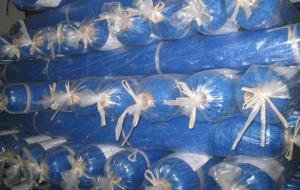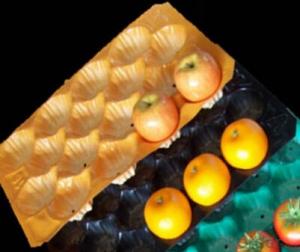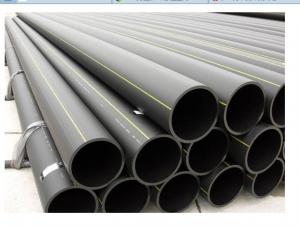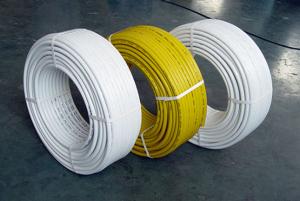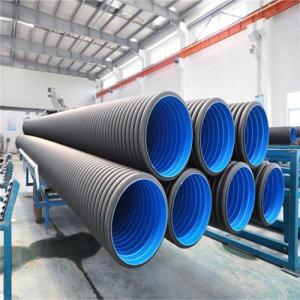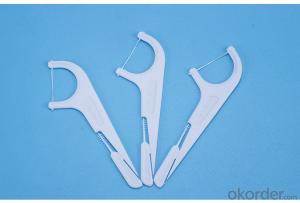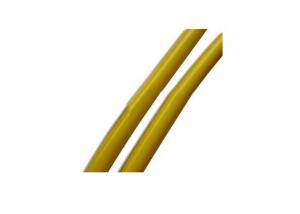PPR Pipe (white, gray)
- Loading Port:
- China Main Port
- Payment Terms:
- TT or LC
- Min Order Qty:
- 5000 Meter m
- Supply Capability:
- 5000000 Meters m/month
OKorder Service Pledge
OKorder Financial Service
You Might Also Like
Features of PPR Pipe (white, gray):
1) Material: PPR
2) Dimensions: dn16-125mm
3) Pipe series: S5/PN12.5, S4/PN16, S3.2/PN20, S2.5/PN25
4) According to ISO15874, DIN: 8078 / 8077
5) Colors: white, gray, green
Properties PPR Pipe (white, gray):
1) Healthy and non-toxic, bacteriologically neutral, conforming to drinking water standards
2) Resistant to high temperatures (110°), good impact strength (over 5MPa)
3) Unique and unrivaled German connection technique, convenient and reliable installation, low construction expenses
4) Excellent heat-insulation property from minimum thermal conductivity
5) Lightweight, convenient to transport and handle, good for labor-saving
6) Smooth inner walls reduce pressure loss and increase flow speed
7) Sound insulation (reduced by 40% compared to galvanized steel pipes)
8) Light colors and excellent design ensure suitability for both exposed and hidden installation
9) Recyclable, environment-friendly, accords with GBM standards
10) Extremely long usage life for at least 50 years
Applications PPR Pipe (white, gray):
1) Cold and hot water supply systems for civil and industrial constructions, e.g. in residential buildings, hospitals, hotels, school and office buildings, ship building
2) Drinking water systems and food industry pipe works
3) Central air conditioning system
4) Irrigating system for gardens and green houses
5) Public and sport facilities such as swimming pools and stadiums
6) For rainwater utilization systems.


- Q:What's the difference between aluminum alloy lined pipe and aluminium plastic composite pipe?
- Lining plastic pipe is an ordinary carbon steel as base, lined with excellent chemical thermoplastic composite by cold or rotational molding, its mechanical properties both steel pipe and plastic pipe, corrosion resistance, corrosion and fouling characteristics, no growth of microorganisms, transport of acid and alkali, salt, there is an ideal pipeline corrosive gas medium.
- Q:Are composite pipes suitable for mining operations?
- Yes, composite pipes are suitable for mining operations. Composite pipes offer numerous advantages such as high strength, corrosion resistance, and light weight, making them ideal for the harsh conditions and demanding requirements of mining operations. They can withstand the abrasive nature of mining materials, are durable, and have a long lifespan, reducing maintenance and replacement costs. Additionally, composite pipes have excellent chemical resistance, reducing the risk of pipe failure due to chemical reactions. Overall, composite pipes provide a reliable and cost-effective solution for various mining applications.
- Q:Are composite pipes resistant to electrical conductivity?
- Yes, composite pipes are generally resistant to electrical conductivity. Composite materials, such as fiberglass or plastic reinforced with fibers, do not conduct electricity as metals do. This makes composite pipes an excellent choice for applications where electrical conductivity needs to be minimized or eliminated, such as in industries dealing with corrosive or hazardous substances.
- Q:What are the connecting modes of steel wire mesh and plastic composite pipe?
- The connection of wire mesh frame and plastic composite pipe is made up of two kinds of electric heating welding and flange connection. Electric melting connection is a composite pipe socket to electrofusion fittings, make embedded electric heat wire on the surface of the heat pipe fitting. The tube surface melting and melt, melt pipe expansion and full clearance, until the appearance of pipe has two mutually melt, melt together, cooling after molding, pipe fittings are closely connected as a whole.
- Q:Can composite pipes be used for chemical vapor deposition?
- Yes, composite pipes can be used for chemical vapor deposition. Composite pipes offer excellent chemical resistance and can withstand the harsh conditions typically associated with chemical vapor deposition processes. Additionally, their lightweight nature and high strength make them advantageous for installation and operational purposes in such applications.
- Q:PsP plastic steel composite pipe, good installation?,
- The welding mode of the pipe should be electrothermal welding, so it is easy to weld.
- Q:Are composite pipes resistant to alkali degradation?
- Yes, composite pipes are generally resistant to alkali degradation. The use of advanced materials in their construction, such as fiberglass or carbon fiber reinforced polymers, makes them highly resistant to the corrosive effects of alkali substances.
- Q:What is a PE composite pipe?
- Your home with the plastic tube is PE, and the PE composite pipe is the outside is a layer of zinc (used to corrosion), the middle layer of steel pipe (for pressure), there is a layer of plastic pipe (used for anti-corrosion), of course, this is galvanized inside a plastic composite pipe. The PE composite pipe (forgive me, I only know the name of the other compound pipe, do not take out to say)
- Q:Are composite pipes resistant to high-velocity flow?
- Yes, composite pipes are generally resistant to high-velocity flow. Composite materials, such as fiberglass, carbon fiber, or reinforced plastics, are known for their high strength-to-weight ratio and excellent performance under stress. These properties make composite pipes capable of withstanding high-velocity flow without significant deformation or damage. Additionally, composite pipes often have smooth internal surfaces, reducing friction and minimizing pressure losses, thus further enhancing their resistance to high-velocity flow.
- Q:Are composite pipes resistant to external pressures?
- Yes, composite pipes are generally resistant to external pressures. Composite materials, such as fiberglass or carbon fiber, have high strength-to-weight ratios and excellent resistance to corrosion and impacts. This makes composite pipes capable of withstanding external pressures and maintaining their structural integrity, making them a suitable choice for various applications requiring durability and pressure resistance.
1. Manufacturer Overview |
|
|---|---|
| Location | Wuhan,China |
| Year Established | 1986 |
| Annual Output Value | US$2.5 Million - US$5 Million |
| Main Markets | Southeast Asia Africa Oceania Mid East Eastern Asia |
| Company Certifications | ISO9001-2008 |
2. Manufacturer Certificates |
|
|---|---|
| a) Certification Name | |
| Range | |
| Reference | |
| Validity Period | |
3. Manufacturer Capability |
|
|---|---|
| a)Trade Capacity | |
| Nearest Port | Wuhan |
| Export Percentage | 71% - 80% |
| No.of Employees in Trade Department | Above 50 People |
| Language Spoken: | English, Chinese |
| b)Factory Information | |
| Factory Size: | 5,000-10,000 square meters |
| No. of Production Lines | 5 |
| Contract Manufacturing | OEM Service Offered;Design Service Offered;Buyer Label Offered |
| Product Price Range | Average |
Send your message to us
PPR Pipe (white, gray)
- Loading Port:
- China Main Port
- Payment Terms:
- TT or LC
- Min Order Qty:
- 5000 Meter m
- Supply Capability:
- 5000000 Meters m/month
OKorder Service Pledge
OKorder Financial Service
Similar products
New products
Hot products
Hot Searches
Related keywords






